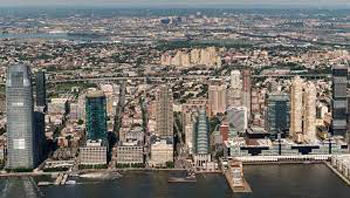
I’m back. I haven’t written much lately but I am always reading and gathering topics for future posts. Here’s one.
Over the last 2-3 months, I’ve come across Twitter discussions among many self-professed YIMBY (Yes In My Back Yard) advocates. If you’re familiar with YIMBYs you know that they believe the lack of housing affordability in American cities largely stems from regulatory restraints that limits housing production. Zoning laws that prioritize single-family homes, for example, limit housing types in much of our metro areas. Delays related to development review and permitting dramatically raise the cost of housing, which eventually get passed on to the buyer or renter. The YIMBY solution is to relax restrictions, allow a wider range of housing types to serve needs, and let the marketplace establish a new, lower-priced equilibrium. The creation of more housing units, at a greater density, would lower prices and rents.
It's a laudable goal. I like density, and the best cities, the ones that are the most vibrant, have the most character and ultimately most successful economically, are built on that foundation. I like cities that have a diverse range of housing types that can appeal to a broad range of people. But I’ve also said cities should exercise caution when following this approach, because it has the potential to create more inequality in cities, not less.
Anyway, the discussion I saw was around the question of what city in America seems to emulate YIMBY practices. What city had relaxed zoning rules – greater density, raised height restrictions, lowered off-street parking standards – to allow for more development? Time and again, Jersey City, NJ was hailed as the YIMBY template. Over the last 20 years or so, Jersey City has definitely increased its housing production, probably in a way not seen elsewhere in the New York City metro area. Some comments from tweets over that time:
“There is only one YIMBY capital of the US and it is Hudson County. Newark definitely gets a runner-up place, but Jersey City reigns supreme"
“he just wants to bring the YIMBY policies of his Jersey City home to NYC”
“I think what Jersey City is doing is genuinely worth celebrating and helps show how a better world is possible”
“Jersey City: an excellent case study in how straight out YIMBY can dramatically lower rents, often quite quickly”
At least a couple of Twitter responses noted that Jersey City produced more new housing units per capita than New York City, making housing more affordable. I found only one mild dissent, from someone who said the Jersey City example should be viewed more as a “happy accident” than implemented YIMBY policy.
That really intrigued me, so I wanted to look at some numbers to see what impact this was having on Jersey City. I wanted to know: were all of Jersey City’s residents benefitting from YIMBYism?
First, let’s establish some context for Jersey City’s transformation. Immediately across the Hudson River from lower Manhattan, Jersey City’s roots as a colony began with the establishment of New Netherlands by the Dutch in 1623. As a European-established settlement Jersey City is nearly as old as New York City itself, and for most of its history it’s been just as urban a community. It’s one of a handful of places that have earned the colloquial nickname of being New York’s "Sixth Borough", given its proximity and social and economic ties to New York. Jersey City was a port and manufacturing center that attracted many European immigrants in the 19th and 20th centuries, and had the working class culture associated with it. It reached a peak population of 316,000 in 1930 before suburbanization took its toll; Jersey City bottomed out at 240,000 in 2000. Since then, however, Jersey City’s made a fantastic rebound. The city reversed decades of population decline with the 2010 Census, climbing upward for the first time in 80 years to 247,000. That growth accelerated in the 2010s as Jersey City grew to 292,000 people in 2020, an 18.1% gain. The city has transformed itself from manufacturing hub to financial center, and its population growth reflects that shift.
I looked at Census data for Jersey City between 2010 and 2019 at the zip code level. Jersey City is comprised of seven zip codes. 2020 Census zip code level data isn’t available yet, as far as I know. Also, the 2019 five-year American Community Survey data I use in my analysis may be an undercount that isn’t addressed until the official census in 2020. Specifically, I wanted to look at changes in population, housing units and median household income by census tract in Jersey City.
Read the rest of this piece at Corner Side Yard Blog.
Pete Saunders is a writer and researcher whose work focuses on urbanism and public policy. Pete has been the editor/publisher of the Corner Side Yard, an urbanist blog, since 2012. Pete is also an urban affairs contributor to Forbes Magazine’s online platform. Pete’s writings have been published widely in traditional and internet media outlets, including the feature article in the December 2018 issue of Planning Magazine. Pete has more than twenty years’ experience in planning, economic development, and community development, with stops in the public, private and non-profit sectors. He lives in Chicago.
Photo: A view of downtown Jersey City, courtesy NJ.com













Quite a difference
between the waterfront financial/residential and the older "downtown" JC neighborhoods that are lumped together in your model.